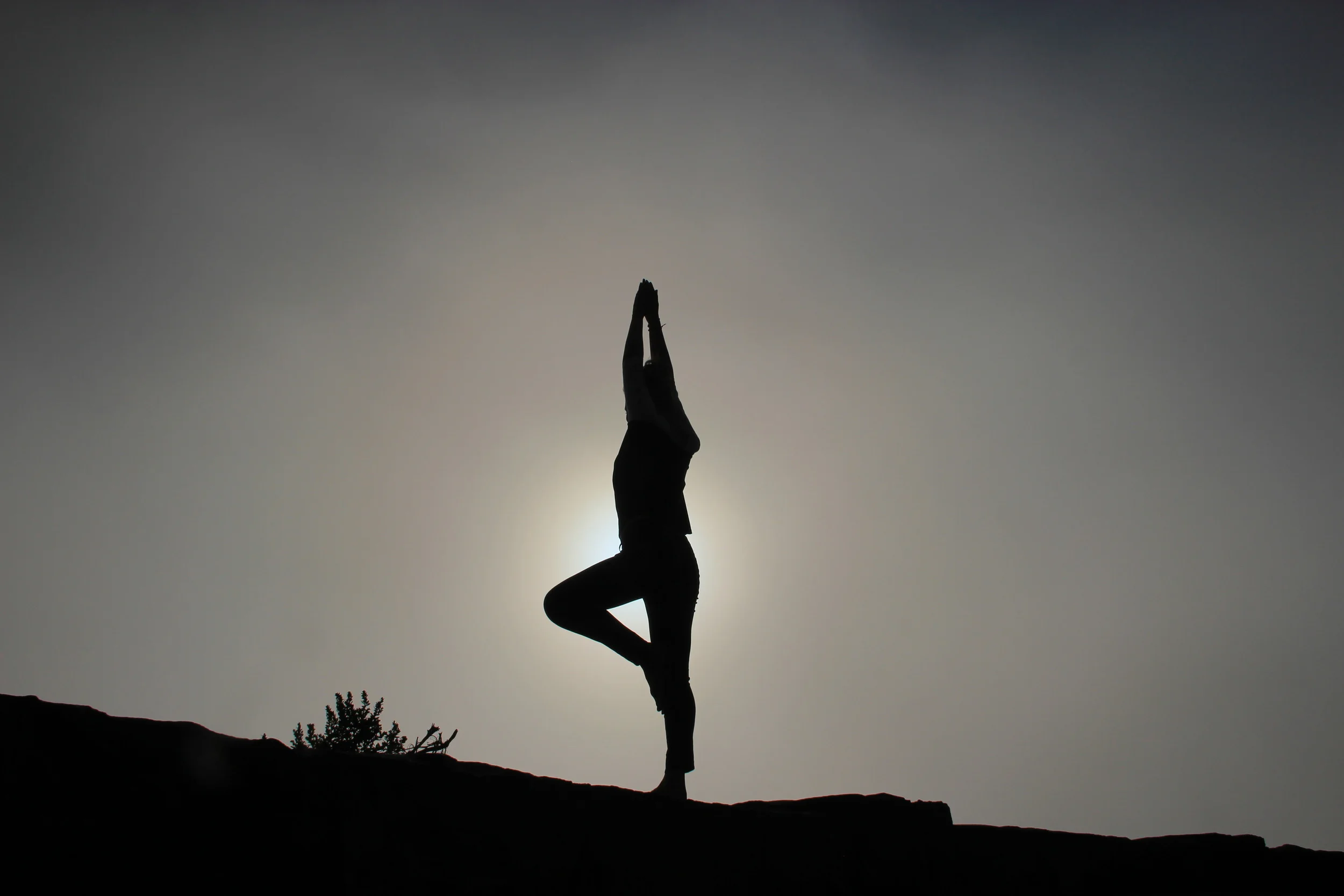Essential Oils & Yoga
The interplay of essential oils and yoga, two very useful practices, lend themselves to myriad physical, mental, emotional, and spiritual benefits. Regardless, lets look at the two together and notice the exponential value of using the two together.
- Essential oils (EO) and yoga have been used for centuries. Yoga is the oldest form of “exercise” on this earth, about 5,000 years old. Essential oils have existed as long as there have been plants on this earth.
- Both are recognized to support the body's healthy functions. Essential oil are the perfect wellness supplement since they are created in nature. Unlike nutritional supplements, essential oils work on a chemical level which gives them the ability to support cellular structure and function, the very building blocks of our beings. There are so many oil choices and ways to use essential oils, that this type of wellness support can be completely personalized. Historically, there is evidence of possible essential oil usage as early as 3,500 B.C. in Egypt, and as time progressed, essential oils were used in a variety of cultures. Practicing yoga poses, sometimes called postures and more formally, asanas, provides a means to strengthen the body. It can also be used therapeutically to treat ailments, much like physical therapy. In addition, the site science of yoga, the medicinal practice, is Ayurveda and is equally 5,000 years old.
- Both EOs and yoga focus on the “individual” as we are all such unique beings. Individuals who are new to the concept of incorporating essential oils into daily living are often surprised at the vast number of choices available for supporting specific wellness goals. This is because most essential oils have at least several constituents, and some essential oils have hundreds of compounds. The variety of choices allows us to experiment and explore, not only with which essential oils we best respond to, but we can also tweak how much, how often, and the method of application. For example, in studying what might help soothe anxious feelings, we not only consider lavender, but Roman Chamomile, ylang ylang, sandalwood, marjoram, a calming blend, or a combination of oils, since all of these oils have chemical constituents that most individuals find soothing. We also learn if we personally benefit more from using the oils topically, aromatically or internally—or a combination of the three. In yoga practice, we can look at how someone with a shoulder injury can benefit from certain yoga poses. Other underlying causes, such as previous injuries, might help determine which poses might be safer or more effective. When we start a new practice, we don’t know what we don’t know, therefore it’s wise to find a well-experienced yoga teacher, schooled not just in yoga but in yoga therapy. It is likewise ideal to work with someone with a good background in using EOs when targeting specific wellness goals. Clearly there is rarely a cookie cutter answer; there is simply using our essential oils and yoga practice to specifically benefit each person and situation.
- Both are useful with more than just affecting physical wellbeing. There are 8 “limbs” of yoga, attending to means of healthy living, from “Saucha” which means cleanliness to “svadhayaya,” self study, “pranayama,” energy work”, … all related on many levels to the use of essential oils.
- Both teach us to honor the body as a temple. We have one life to live in this vehicle that is our body. It was given to us by God and it is our responsibility to take care of it. In doing so we have freedom to live the purpose of our life, to honor God.
- Both are tools. Both explain that although God gave us everything we need on this earth and in our bodies to nurture ourselves, EOs and Yoga are tools to enhance the body’s capacity to support healthy functions.
- Both can affect emotional well-being. Aromatherapy is a science on its own, using the olfactory system to connect with the body’s limbic system so as to pull us out of emotional potholes. Yoga uses restorative poses to calm the central nervous system, and standing poses and inversions to energize and empower us, pulling us away from negativity and helping us feel the potential of our own strength in many ways.
- Both are a “practice.” We practice to understand ourselves and our world better, to see where our efforts can be helpful and useful. We practice to learn much more than how to be strong and healthy physically, emotionally and spiritually. We practice to learn to be better human beings everyday, to affect positive change and to make our world a better place. And, as with the idea of what the wordpractice means, we must work at using these tools consistently, so that we refine what we are able to do and evolve along the way.
Whether you are a new or a seasoned student, try using your pure essential oils for your next yoga practice. To learn more, visit our blog, purchase our book, or sign up for our next Essential Yoga Sangha, where we hope to provide great essential oil education as well as information on how to practice yoga, safely and effectively.
Mona & Asti


